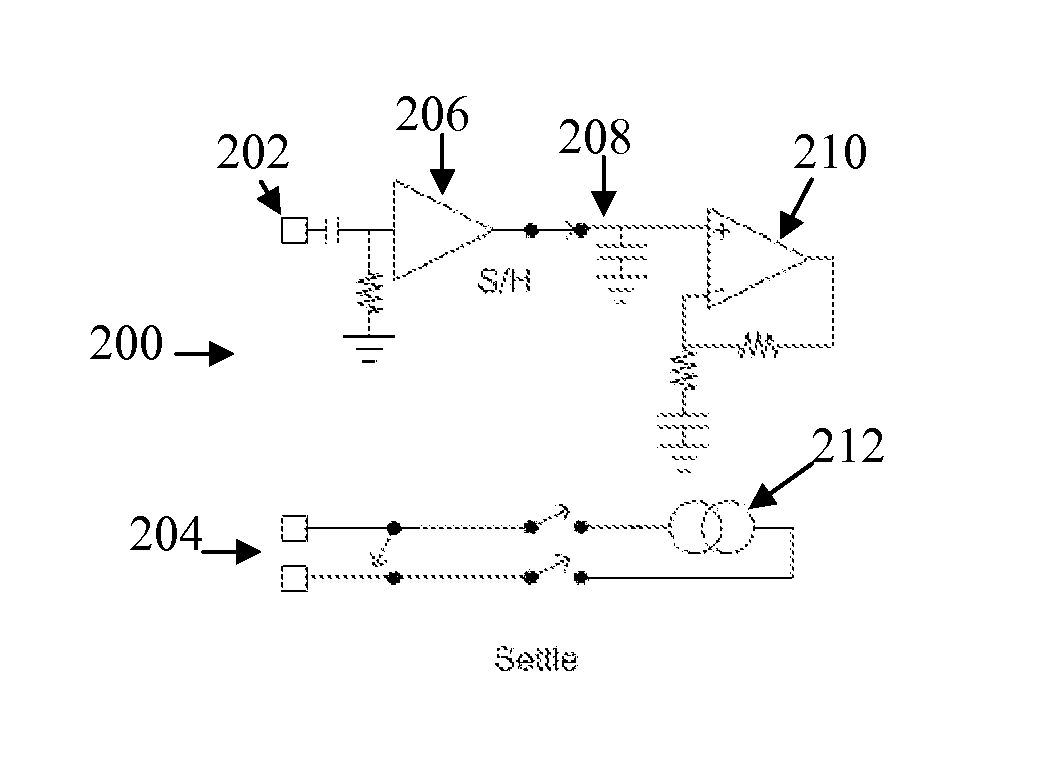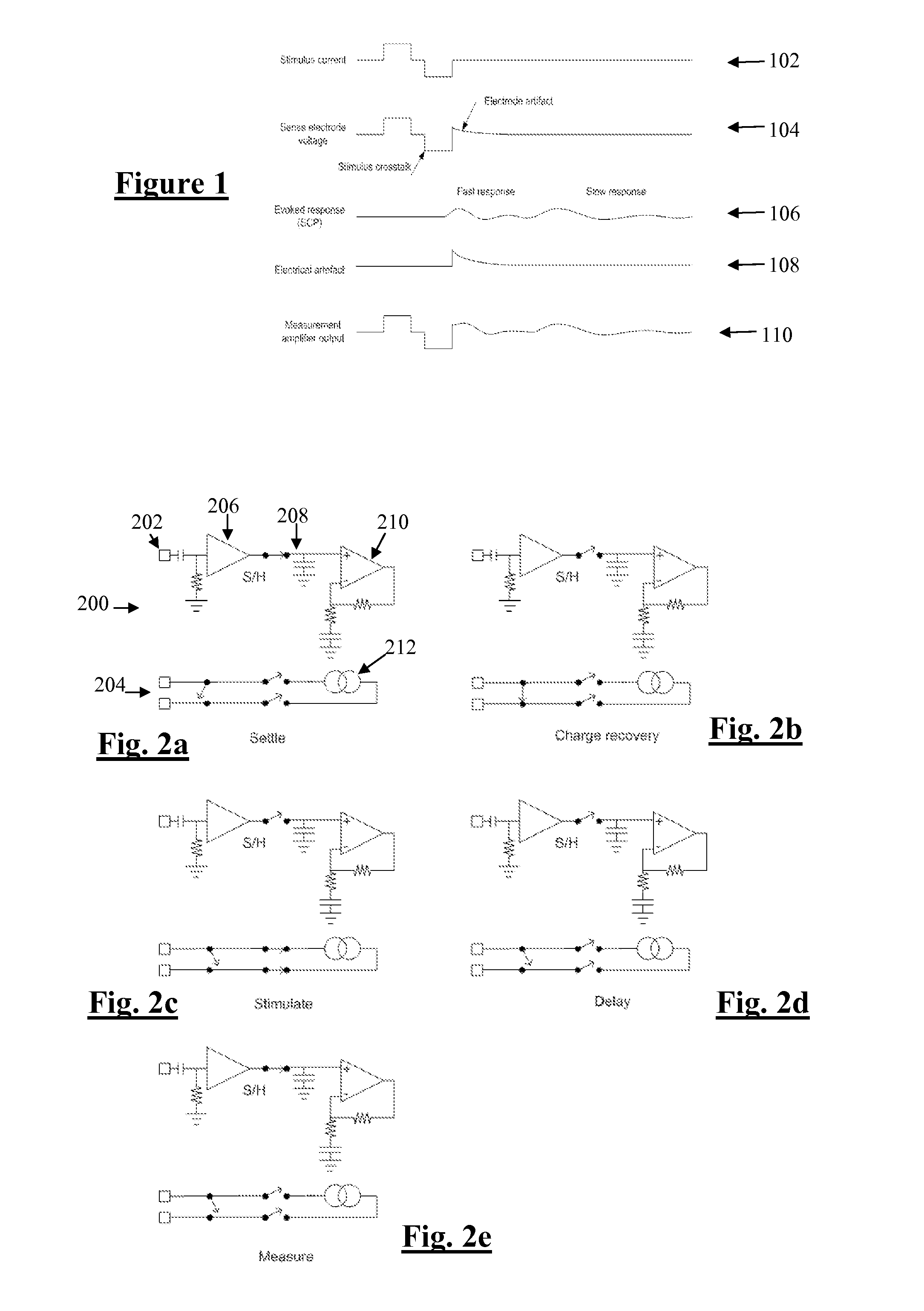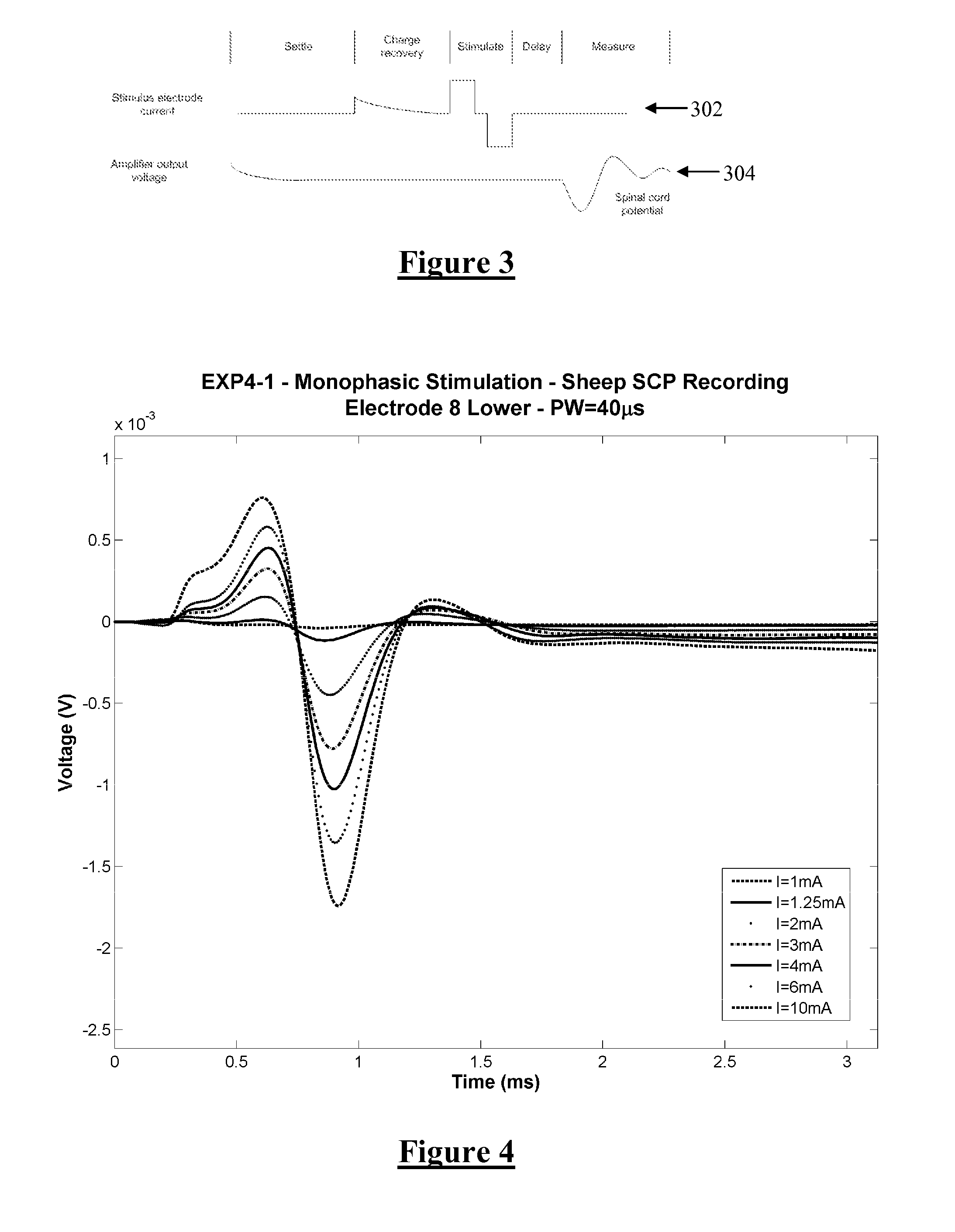Method and apparatus for measurement of neural response
a neural response and neural response technology, applied in the field of neural response measurement, can solve the problems of difficult task, significant obstacle to isolating the cap of interest, and poorly understood precise mechanisms involved, and achieve the effect of reducing the dynamic range requirements of implanted amplifiers, simple morphology, and low dynamic rang
- Summary
- Abstract
- Description
- Claims
- Application Information
AI Technical Summary
Benefits of technology
Problems solved by technology
Method used
Image
Examples
Embodiment Construction
[0054]FIG. 1 shows the currents and voltages that contribute to SCP measurements. These signals include the stimulus current 102 applied by two stimulus electrodes, which is a charge-balanced biphasic pulse to provide low artefact. Alternative embodiments may instead use three electrodes to apply a tripolar charge balanced stimulus. In the case of spinal cord stimulation, the stimulus currents 102 used to provide paraesthesia and pain relief typically consist of pulses in the range of 3-30 mA amplitude, with pulse width typically in the range of 100-400 μs, or alternatively may be paraesthesia-free such as neuro or escalator style stimuli. The stimuli can comprise monophasic or biphasic pulses.
[0055]The stimulus 102 induces a voltage on adjacent electrodes, referred to as stimulus crosstalk 104. Where the stimuli 102 are SCP stimuli they typically induce a voltage 104 in the range of about 1-5 V on a SCP sense electrode.
[0056]The stimulus 102 also induces electrode artefact, which i...
PUM
 Login to View More
Login to View More Abstract
Description
Claims
Application Information
 Login to View More
Login to View More - R&D
- Intellectual Property
- Life Sciences
- Materials
- Tech Scout
- Unparalleled Data Quality
- Higher Quality Content
- 60% Fewer Hallucinations
Browse by: Latest US Patents, China's latest patents, Technical Efficacy Thesaurus, Application Domain, Technology Topic, Popular Technical Reports.
© 2025 PatSnap. All rights reserved.Legal|Privacy policy|Modern Slavery Act Transparency Statement|Sitemap|About US| Contact US: help@patsnap.com



